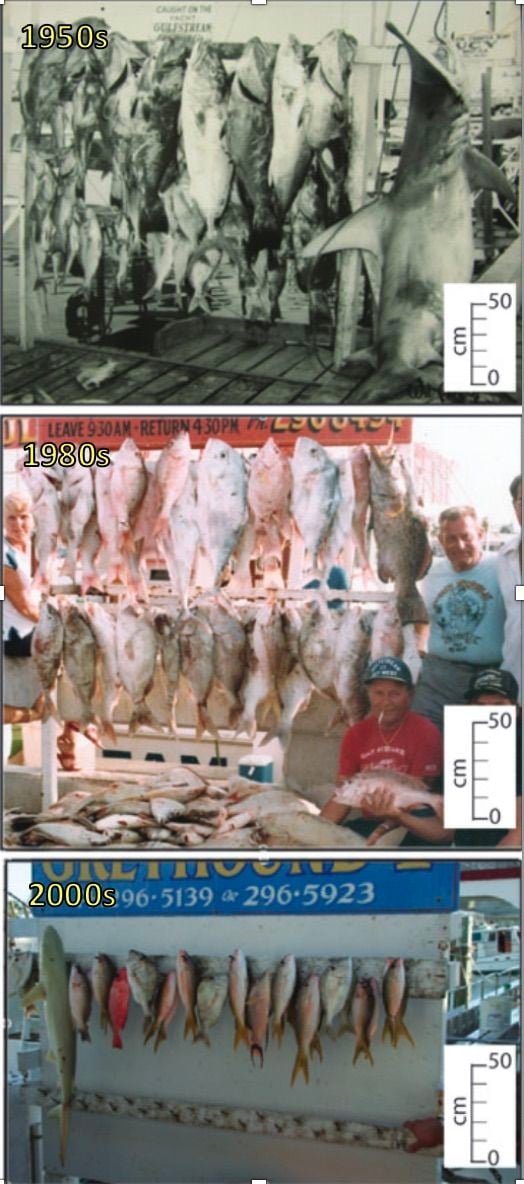OFFICE OF ACADEMIC APPOINTMENTS AND INTERNSHIPS
What Fish Collections Reveal About Oceans of the Past
Museums have a lot of stuff. Wandering through the collection “pods,” as we call them at the Smithsonian, you can find mummies, ancient textiles, and taxidermized polar bears. You can even find jars of fish caught in the 1800s by some of the first documented naturalists. These fishes can tell us what coral reefs were like in the past and can help us figure out how we have changed these vibrant ecosystems over the past two centuries.
/https://tf-cmsv2-smithsonianmag-media.s3.amazonaws.com/blogging/featured/IMG_2210.jpg)
Museums have a lot of stuff. Wandering through the collection “pods,” as we call them at the Smithsonian, you can find mummies, ancient textiles, and taxidermized polar bears. You can even find jars of fish caught in the 1800s by some of the first documented naturalists. These fishes can tell us what coral reefs were like in the past and can help us figure out how we have changed these vibrant ecosystems over the past two centuries.
Have you heard about food webs? Food webs create the structures that make up living communities, and they tell us who eats whom. They exist everywhere life can be found – on the high seas, in rainforests, and even in the frozen tundra. Below is an example of the North American desert food web. An organism’s trophic level depends on how high up it is in its food web. As you can see, kit foxes and golden eagles occupy the highest trophic level in this desert food web, while plants occupy the lowest. Ecosystems with higher biodiversity usually have more complex food webs because of all the complicated relationships between the different organisms.

Now, let’s turn our attention to the oceans! Civilizations all around the world have been fishing for a very long time. Over the past few decades, though, we have really been hitting the seafood. These pictures of trophy fishes, taken in the Florida Keys over that time span, show just how much all of this fishing has changed coral reef communities. Some fish species, like the goliath grouper, have become endangered while other species have become smaller in size as the largest individuals are removed from the population.

These changes affect not only the size of the fish on your plate, but also the structure of coral reef communities. As we remove fishes from the ocean, marine food webs are becoming increasingly simplified and compact. We can measure these changes using stable isotopes – in particular, 15N. This naturally occurring nitrogen isotope gets magnified in fishes at higher trophic levels, so we can tell if average trophic levels are dropping through time by measuring 15N in fishes collected from the 1800s until the present.
During my fellowship at the National Museum of Natural History, I have been measuring these isotopes in fishes from the Smithsonian’s collection to figure out whether coral reef food webs are becoming simplified through time. By sampling grouper, snapper, and jack species from around the world, I have found that these food webs are becoming simplified and compacted – at least in the Caribbean. Understanding the nuances of these changes – for example, what regions have been most impacted, or why the declines occur in some species and not others, will be crucial to our understanding of how overfishing affects coral reefs. Going forward, we can use this information to figure out which fishing practices will best maintain the structure of coral reefs and help preserve healthy marine ecosystems in the future.

In the meantime, we can all do our part to help protect marine ecosystems by choosing sustainably caught seafood. There are even apps to help you find the most ocean-friendly option! Seafood Watch by the Monterey Bay Aquarium is my personal favorite. Enjoying seafood in a mindful way will help keep our oceans healthy for generations to come.
References
Cain, M. L., Bowman, W. D. & Hacker, S. D. 2008. Ecology. Sunderland MA: Sinauer Associate Inc.
McClenachan, L. 2009. Documenting loss of large trophy fish from the Florida Keys with historical photographs. Conservation Biology 23 (3): 636-643.

